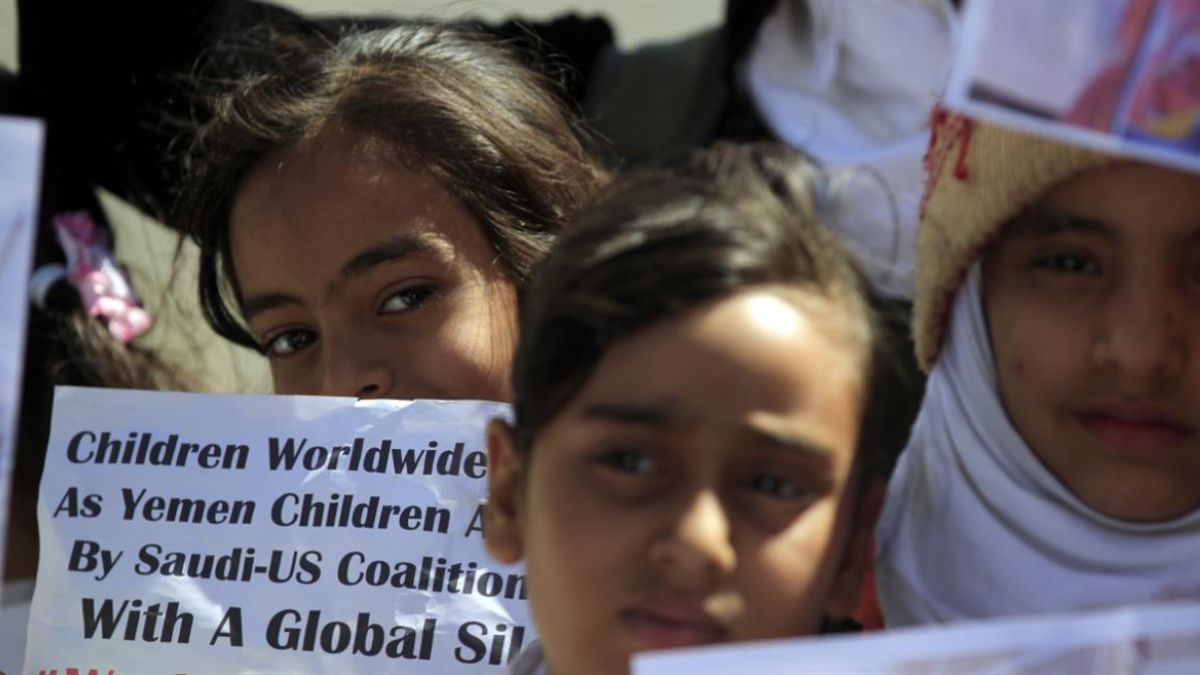In 2018, the World Saw Wars on Children
YemenExtra
SH.A.
BY: CARYL STERN
This year the world repeatedly saw news of war and hate, from the ongoing conflicts in Yemen and Afghanistan, to the thousands of migrants fleeing violence and instability across Southeast Asia, Latin America and the Middle East. As these narratives made their way to television screens and newspapers across the country, a collective thread emerged: these conflicts have devolved into wars on children, and every day, they continue to threaten children’s livelihood and well-being.
Americans everywhere were heartbroken as they saw images of Amal Hussein, a 7-year-old girl whose malnourished body brought attention to the humanitarian crisis in war-torn Yemen. Many were struck when they came across news that two in three children need humanitarian aid in the Central African Republic, a country rife with political and social conflict that some people had never even heard of. Above all, humanity was disheartened to see the plight of today’s most vulnerable children repeatedly framed as a political issue.
But as many people asked themselves, “What future have we built for the world’s children?” another powerful trend we saw this year was that Americans want to help. This year on Giving Tuesday alone, Americans stepped up and helped raise over $125 million on Facebook to support causes they care about. Media outlets and foundations advocated for those in need, as they highlighted the toll of the war in Yemen on front pages of newspapers, and encouraged financial support and advocacy all the way up to Congress.
We’ve also seen corporations reflect on their global impact, as they increased their investments in the United Nations Sustainable Development Goals (SDGs). Through innovative public-private partnerships, companies have committed to solving the world’s most complex challenges in global development, from tackling climate change to saving children’s lives — and in turn, they’ve cultivated creative and impactful solutions. Microsoft’s partnership with UNICEF is just one example of this: they recently committed to protect and help children affected by conflict and natural disasters by increasing access to education through digital technology and scaling up UNICEF’s digital child protection case management system.
To develop these solutions, however, we needed to listen to those whose who were impacted — those whose voices weren’t being heard. When on the ground at Rohingya refugee camps, or at the U.S.-Mexico border, I met children and families who, despite having different cultures and beliefs, shared the same desires: to be safe, to be protected, and above all, to be heard.
The world is very different than it was when organizations such as UNICEF began their work to save and protect children. Through the dedication of advocates and partners, global under-5 child mortality has decreased by more than half, and 3 million kids are saved each year by lifesaving vaccines. Deaths caused by polio have decreased by over 99 percent since 1988. Some of the world’s most vulnerable communities in over 100 countries now have access to safe water and sanitation. And, we’ve garnered bipartisan support from government officials, as we worked to help stop child marriage in 12 priority countries.
But despite this progress, there is more work to be done. That’s why, next year, we’re calling on government leaders and individuals to continue using their voices, their wallets, their social media platforms — whatever they have at their disposal — to help uphold children’s rights in every corner of the world. By doing so, together we can build a world in which every child has a chance to survive and thrive.
THE VIEWS EXPRESSED BY CONTRIBUTORS ARE THEIR OWN AND NOT THE VIEW OF YEMENEXTRA.

